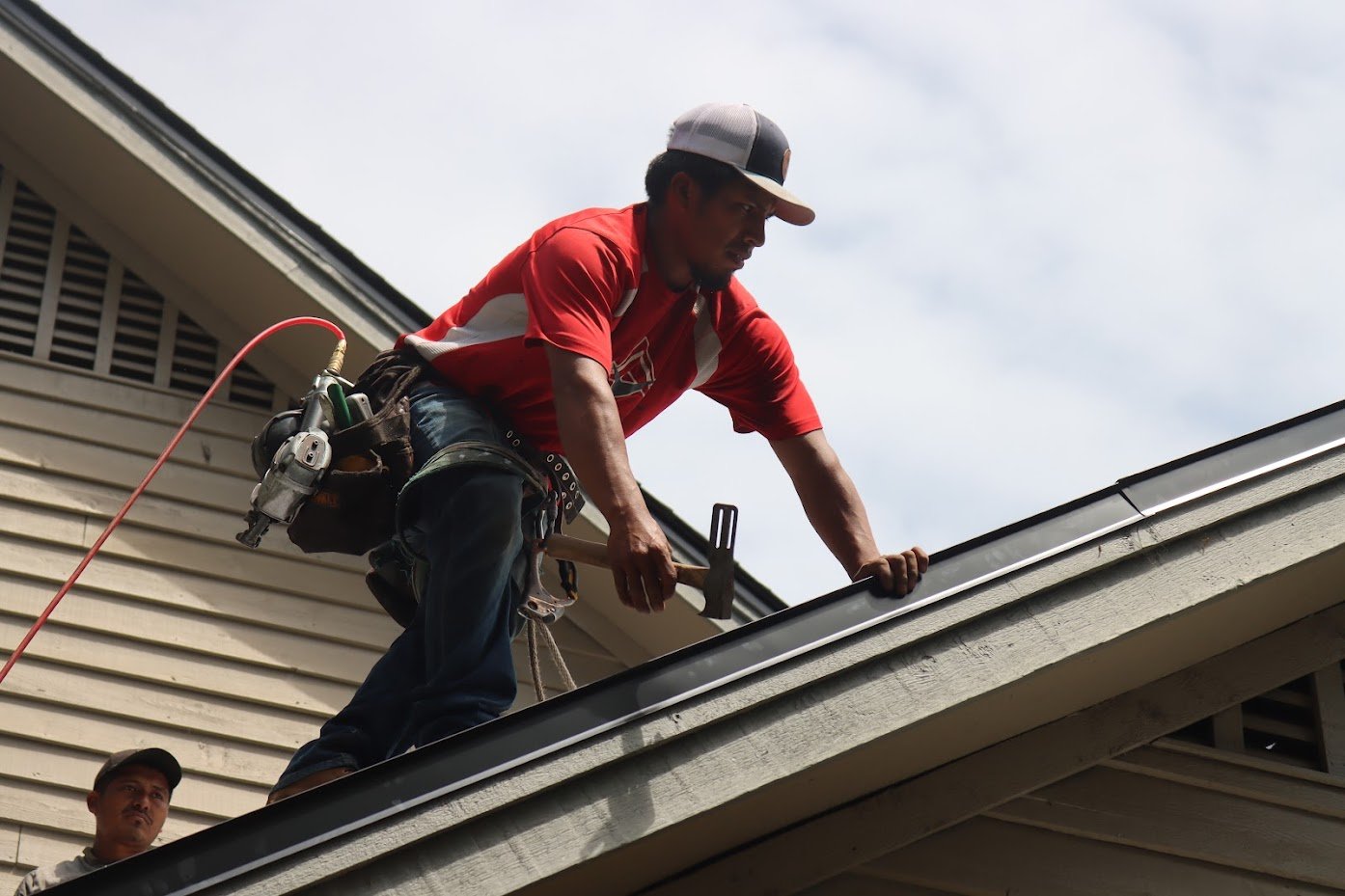Leading Beachside Roof Options for Stylish Coastal Living
When choosing roof alternatives for seaside homes, it is vital to think about both visual appeal and durability versus extreme aquatic conditions. Comprehending just how these products perform in coastal settings can considerably affect design choices, triggering a better exam of their particular qualities and viability for your seaside retreat.
Asphalt Tiles
Asphalt tiles are a prominent selection for roof covering in coastal areas as a result of their affordability and versatility. These shingles are composed of a fiberglass base and asphalt covering, making them light-weight yet durable. They come in a range of designs and colors, enabling house owners to choose a look that complements their seaside aesthetic.
Among the primary benefits of asphalt shingles is their cost-effectiveness. Compared to various other roofing materials, such as timber or floor tile, asphalt tiles use significant savings while still providing ample defense against the elements (oahu roofing). Their installment process is relatively simple, adding to decreased labor expenses
In coastal atmospheres, asphalt roof shingles execute well versus wind and rain, particularly when chosen with proper wind scores. Additionally, numerous asphalt shingles are treated with granules that provide UV security, aiding to minimize the impacts of sun exposure, which is critical for homes situated near the ocean.
However, it is vital to think about the life-span of asphalt shingles, as they usually last 15 to three decades. Routine upkeep, including assessments and prompt repairs, can boost their long life and guarantee reliable efficiency in time. This makes asphalt tiles a sensible choice for beachside residential properties.
Metal Roofing

One of the crucial benefits of metal roofing is its long life (oahu roofing). When properly preserved, metal roofs can last as much as 50 years or more, significantly outlasting traditional materials like asphalt tiles. In addition, steel roof is light-weight, which decreases the structural tons on a home, making it less complicated to install and less exhausting on the existing structure
Energy effectiveness is an additional engaging attribute. Steel roofs reflect solar convected heat, which can assist lower cooling expenses in warmer months-- a substantial advantage for seaside occupants. The range of surfaces and designs readily available additionally permits property owners to accomplish a personalized look that matches their coastal aesthetic.
Lastly, metal roof covering is environmentally friendly, usually made from recycled materials and totally recyclable at the end of its life process. With its combination of longevity, energy performance, and visual convenience, steel roof sticks out as a leading option for elegant and sustainable seaside living.
Ceramic Tile Roofing
Tile roof covering has actually become a preferred option for coastal homes, bringing a blend of toughness and aesthetic appeal. This roof covering choice is especially renowned for its resistance to harsh seaside elements, such as salt spray, high winds, and intense ultraviolet rays (oahu roofing). Made from products like clay or concrete, floor tile roofings preserve their integrity gradually, offering lasting defense for beachside homes
The unique look of tile roof coverings improves the building style of seaside homes, providing a stylish and timeless look. Available in numerous colors and shapes, tile roof covering can complement different design preferences, from Mediterranean to modern-day aesthetics. In addition, ceramic tile roof covering provides outstanding thermal insulation, aiding to regulate interior temperatures and decrease power costs.
One of the crucial advantages of ceramic tile roof is its reduced maintenance demand. Unlike various other products that may break down or call for regular repairs, ceramic tile roof coverings can endure the test of time with marginal maintenance. Their fire-resistant homes include an added layer of safety for coastal house owners.
Timber Shake
Timber drink roof covering presents an unique option for beachside homes, integrating all-natural beauty with practical advantages. This roof covering style is crafted from hand-split cedar, using an organic aesthetic that harmonizes with seaside environments. The rugged texture and abundant shade variants of timber trembles improve the aesthetic charm of any type of seaside home, creating a warm and welcoming ambience.

However, it is vital to think roofers oahu about maintenance when choosing wood shake roofing. Routine evaluations and treatments to avoid mold and mildew, bug, and mildew damage are necessary to lengthen its life-span. Furthermore, applying a protective sealer can boost water resistance, essential for homes found near the ocean.
Synthetic Roof Covering Materials
While standard materials have their beauty, artificial roofing alternatives are significantly preferred for beachside residential properties because of their extraordinary resilience and reduced maintenance requirements. These roof covering materials, which include artificial slate and rubber shingles, are particularly engineered to hold up against extreme coastal problems, such as high winds, salt exposure, and hefty rainfall.
Among the key advantages of artificial roof is its light-weight nature, making setup easier and minimizing the structural tons on homes. Furthermore, artificial materials can be made to simulate the visual appeal of typical roofing alternatives, offering a sophisticated appearance without endangering function. Lots of artificial roofing systems featured warranties that cover decades, providing homeowners peace of mind regarding durability and efficiency.
Moreover, artificial roofing is ecologically pleasant, frequently made from recycled products, and can be totally recyclable at the end of its life cycle. The low maintenance nature of these products implies home owners spend less money and time on maintenance, permitting them to appreciate their coastal way of life without worry. For those looking for a mix of resilience, practicality, and style, synthetic roof products arise as a leading option for beachside living.
Verdict
To conclude, picking the proper roof covering product is crucial for enhancing both the aesthetic appeal and resilience of coastal homes. Asphalt shingles offer financial advantages, while steel roof makes certain long life and power performance. Ceramic tile roof covering adds unique architectural appeal, and wood shake offers a natural visual. Synthetic materials offer a modern-day, low-maintenance option. Each option presents distinctive advantages, enabling homeowners to make enlightened options that align with their design choices and the demands of seaside atmospheres.
